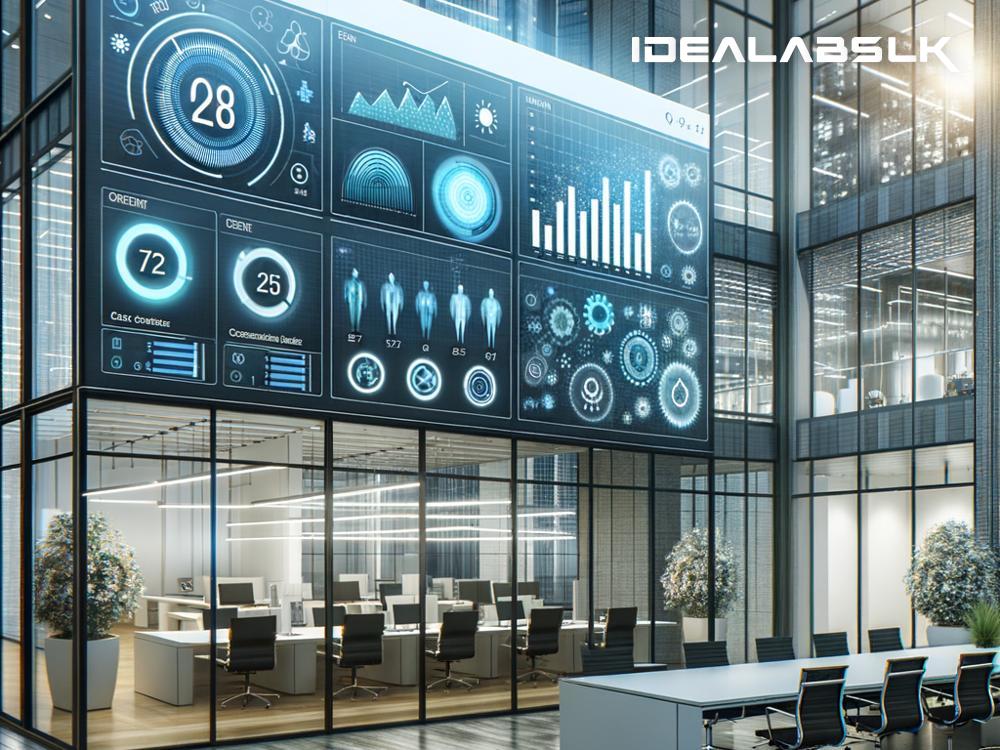How AI Automates Energy Optimization in Smart Office Tools
In today's fast-paced world, saving energy has become more important than ever, not just for the environment but also for cutting down costs in offices. Imagine walking into a room that knows exactly how much light you need or an air conditioner that adjusts itself to ensure everyone is comfortable without anyone touching the thermostat. This isn't a page from a science fiction novel; it's the reality of how artificial intelligence (AI) is reshaping energy optimization in smart office tools. Let's delve into this fascinating journey of AI-driven energy efficiency and discover how it transforms our workplaces into smarter, greener spaces.
Understanding AI in the Context of Smart Offices
Before we dive into specifics, let's lay the groundwork by understanding what AI is. Artificial Intelligence, in simple terms, is the capability of a machine to imitate intelligent human behavior. It learns from data, makes decisions, and carries out tasks that would typically require human intelligence. In the context of smart offices, AI acts as the brain behind the operation, learning from daily activities and constantly adapting to optimize energy use without compromising comfort or productivity.
Lighting and Temperature Control
One of the most straightforward yet impactful applications of AI in smart offices is in lighting and temperature control. AI systems can learn the natural light patterns and adjust the artificial lighting accordingly, ensuring that just the right amount of light is used throughout the day. Similarly, by monitoring and analyzing temperature preferences and patterns, AI can optimize heating, ventilation, and air conditioning systems (HVAC) to provide the most comfortable environment at the lowest possible energy cost.
Here's how it works: sensors placed around the office collect data on light levels, temperature, and even how many people are in a room at any given time. This data is then fed into an AI system that analyzes it in real-time and makes instant adjustments. For instance, if a room is empty, the AI can turn off lights and dial down the heating or cooling, saving energy passively without any human intervention.
Predictive Maintenance
Another exciting advantage of AI in office energy optimization is in predictive maintenance. Traditionally, equipment like HVAC systems and lighting fixtures are maintained on a set schedule or when they break down. However, with AI, these systems can forecast when a piece of equipment is likely to fail or need servicing, thereby ensuring that maintenance is done just in time. This not only prevents energy wastage due to inefficient operation but also prolongs the lifespan of the equipment, saving money and resources in the long run.
For example, an AI system might detect a slight but consistent drop in the efficiency of an HVAC system. It can then alert facility managers to service the system before it fails or starts consuming more energy to maintain temperatures, ensuring continuous and efficient operation.
Energy Consumption Analytics & Optimization
AI doesn't stop at controlling lighting and temperature or predicting maintenance needs. It goes a step further by providing valuable insights through energy consumption analytics. These systems can break down energy use throughout the office, identifying areas where energy is wasted and suggesting improvements. It could be as simple as noticing that certain areas are over-lit or identifying patterns of energy use that hint at inefficiencies in how spaces are used within the office.
Armed with this information, businesses can make informed decisions on how to adjust their energy policies, office layout, and even scheduling to ensure peak energy efficiency. The AI system continuously learns and improves, making more accurate predictions and adjustments as it gathers more data, creating a cycle of ongoing optimization.
The Future is Smart and Green
The integration of AI in smart office tools is revolutionizing energy optimization, making it easier for businesses to reduce their carbon footprint while saving on energy costs. This technology is not just about automation for convenience; it represents a significant step forward in our collective effort toward sustainability and energy efficiency.
As we move forward, the potential of AI in this area is boundless. From smarter, self-adjusting buildings to systems that can integrate renewable energy sources effectively, the future of smart offices is not just about working smarter, but also greener. The journey of AI-driven energy optimization is just beginning, and it promises to transform our workplaces in ways we are just starting to imagine.

